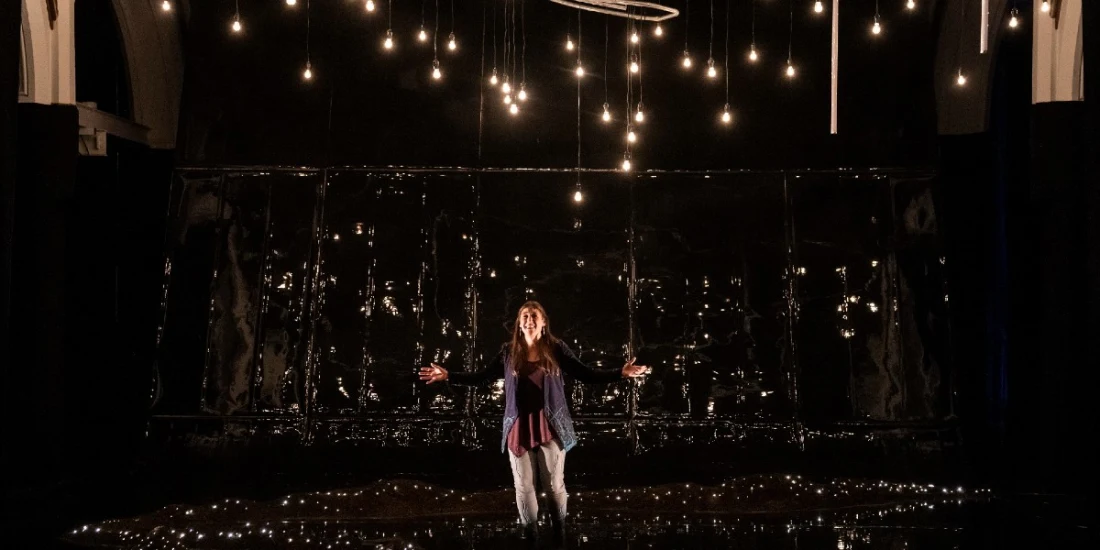'Where We Belong' review — theatrical memoir is a masterclass in storytelling and education
Hao Bai's gorgeous set design for Madeline Sayet's Where We Belong transcends time and space. We're simultaneously on a bygone earth without borders and today's earth after people insisted on drawing them. We're simultaneously by the modern-day River Thames and the Massapequotuck River, as it was once called. Physically, Sayet also points out, we're watching her show just off Broadway, a street that used to be a key Lenape trading trail.
Visually and audibly, Sayet's expertly written and performed theatrical memoir reminds us that history is no faraway thing, but a thriving part of the communities and nature that surround us, if only we pay attention.
Sayet urges us all to do so by bearing witness to her story, that of a Native American woman. Her mother always insisted it was on Sayet's shoulders to keep the Mohegan tribe's traditions and truths alive. She's naturally skeptical when Sayet announces plans to study Shakespeare in London — Sayet insists she's using the Bard to present the Native experience to those who wouldn't otherwise listen, but her mother initially thinks Sayet is forsaking her tribe and her culture. Though Sayet finds unexpected connection with an ancestor across the ocean, she eventually starts to wonder, well, where she belongs.
Sayet indicates in program notes that Where We Belong was never meant to be a play. The production at The Public Theater does, indeed, straddle the line between one-woman show and TED Talk — fitting, perhaps, for a story all about jumping between countries and communities and searching for a sense of belonging. Sayet jumps between personal narrative and historical education, using her story to raise awareness about the history of the Mohegan people.
As with a TED Talk, it is clear that audiences are meant to learn something. Or in this case, many worthwhile things about Native history and both those who have preserved it and trampled on it. Takeaways range from fascinating (the history of Fidelia Fielding/Flying Bird, the last fluent Mohegan speaker) to startling (the 12,000 human remains in storage at the British Museum) to theatrical (the names of currently active Native theatre troupes to discover once the show is over).
And every fact and anecdote prompts bigger questions. What of oneself is lost in translation? Is it worthwhile to reimagine age-old, white stories through marginalized perspectives, or is it more productive to create new stories? Similarly, can one still honor one's culture and assimilate into a new one at the same time, or must they pick a "side"? Why do there even need to be sides?
Sayet doesn't come up with answers to all these questions by the end of Where We Belong. The show is an ongoing journey, it seems, to work through them. One thing she does discover, though, is that it is possible to belong to multiple places. That's fitting for the show, too — Where We Belong belongs to the realms of both theatre and lecture, cultural retrospective and personal memoir. Sayet blurs the borders between these different kinds of storytelling, creating a unique performance that occupies a category all its own.
Photo credit: Madeline Sayet in Where We Belong. (Photo by Joan Marcus)
Originally published on
